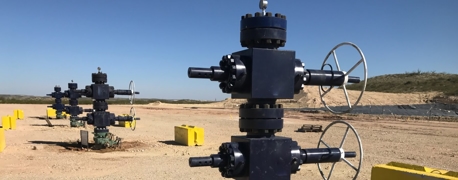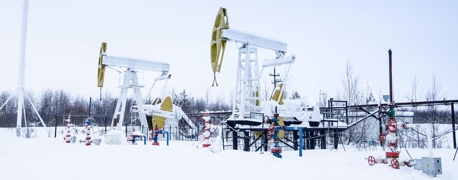Ready, Set, Explode: Dangers of Pipeline & Trench Blasting

Excavating trench and pipeline projects can be a time-consuming and costly endeavor, but trench blasting provides an efficient and cost-effective solution. Through the use of explosives, crews are able to quickly penetrate rock formations that would otherwise take hours or days to excavate with traditional methods. Industries that benefit from controlled explosions include mining, construction, and the energy sector.
However, trench blasting does come with some serious safety risks for workers in residential or commercial areas due to the nature of using explosives in close proximity to people. In this article, we’ll provide an overview of trench blasting including its benefits, drawbacks, and safety considerations when working on such projects.
What Is Trench Blasting & When Is It Necessary?
Trench blasting, also known as pipeline blasting, is a process of using controlled explosives to facilitate the excavation of trench and pipeline projects in rock formations. This process is completed by drilling holes into the rock formation where explosives are then placed. The explosive force created from the blast helps break apart the rock, allowing for trench and pipelines to be constructed with minimal effort. Controlled explosions are necessary when constructing pipelines over long distances, such as when running through rock formations or in areas with dense vegetation.
The basic procedure for pipeline blasting includes:
- Determining the safest pattern to efficiently create a semi-circular trench
- Drilling sufficiently deep holes into the rock
- Installing explosive material into each hole
- Filling the holes with inert material to direct the explosion into the rock
- Wiring the explosives to ignite in sequence for efficient demolition of rock/soil
The primary benefit of trench blasting is that it’s a faster and more cost-effective solution to traditional trenching methods. Trench blasting is especially advantageous for trenching in residential or commercial areas because it allows crews to control the amount of material being blasted away. This is important for keeping debris from damaging property and maintaining strict safety standards. It also gives pipeline workers more control over their excavation path, which helps them stay out of harm's way. Precision offers another benefit: pipeline blasting can be used in a variety of environments, from mountainous areas to dense urban centers.
What Kind of Explosives Are Used for Pipeline Excavation?
Trench blasting uses controlled explosives typically composed of high-energy materials such as TNT, dynamite, or ammonium nitrate fuel oil (ANFO). ANFO is popular for controlled explosives because it's cheaper than traditional dynamite. The type of explosive used can vary depending on the project and its needs as well as local regulations for handling explosives. For example, some projects may require special considerations such as sound control or a reduced blast radius.
The typical size of a trench or pipeline blast is highly dependent on the requirements of the project. Generally speaking, trench and pipeline blasting requires smaller, more controlled charges than those used in open-pit mining operations or larger demolition projects. The amount of explosives used typically ranges from a single pound to several hundred pounds, depending on the size of the trench.
The Safety Risks of Trench Blasting & Pipeline Excavation
Despite its many benefits, trench blasting comes with some serious safety risks that must be mitigated before starting an excavation project. The most significant risk is the potential for injury or death due to poor management, poor design or drilling of the blast holes, or uncontrolled debris. Poor planning and protection, for instance, could lead to "flyrock," or bits of debris launched by the explosives like shrapnel. Blast containment depends on the experience of the trench blasting crew and the types of explosives being used, so it is essential that trench blasting operations are completed by a qualified individual who has extensive knowledge and experience with trench blasting operations. The person responsible for managing the blast site, from the size of the clearance zone to the drilling depth of the holes, is known as the Blaster-in-Charge (BIC).
The BIC is responsible for inspecting and monitoring every aspect of the explosion, including:
- Establishing a safe area around the blast zone
- Posting guards at all entrances to the blast zone
- Inspecting the blast site's geology
- Reviewing the environmental impact of the blast
- Ensuring compliance with federal security standards regarding explosives
- Reviewing all general and site-specific hazards
- Ensuring the blast's path and design are suitable for environment
Poor planning of the drill holes, for instance, can result in a surface explosion that shoots out harmful debris like bullets. Blast misfires that occur before a blast site is fully cleared are obvious threats, as is a small or poorly conceived blast clearance zone. A less well-known threat from controlled explosions is toxic fumes created by carbon monoxide; if workers enter a blast zone too soon after excavation, they could suffer from hypoxia and carbon monoxide poisoning. All of this falls under the BIC's responsibilities.
The Role of the Blast Mat
A major safety feature of any pipeline blasting project is the blast mat. Blast mats are thick layers of heavy rubber placed between the explosives and any nearby structures, such as buildings or roads. When anchored to the ground properly, these mats absorb the shockwave generated by the explosives and help contain any dangerous flying debris. Blast mats can be made from used tires, which makes them cheap to produce. Sometimes mats are hung vertically from a crane to protect the site from explosions where horizontal protection isn't possible; when hung, blast mats are called "blast curtains." They are often fortified by a blast blanket, which are made from industrial felt or fine netting. Unlike blast mats, blast blankets allow gas and pressure to pass through them in order to catch any debris that got past the mats.
The End of Controlled Explosive Excavation?
In places like Europe, rising concerns about vibrations, noise, and dust from pipeline or trench excavation have forced businesses to pursue other forms of excavation. For instance, some project supervisors are turning to excavation machines—AKA "rip and load" methods—to clear out material thoroughly and efficiently. However, these machines aren't suited for all types of rock. Other businesses are turning to enormous hydraulic hammers to smash rock into removable debris—a method that was once employed solely for breaking large pieces of rock after blasting.
As industries discover cheaper and less hazardous methods of excavation, blast trenching may eventually become obsolete. However, until then, pipeline blasting remains one of the most cost-effective, rapid, and reliable methods of excavation across all industries.


